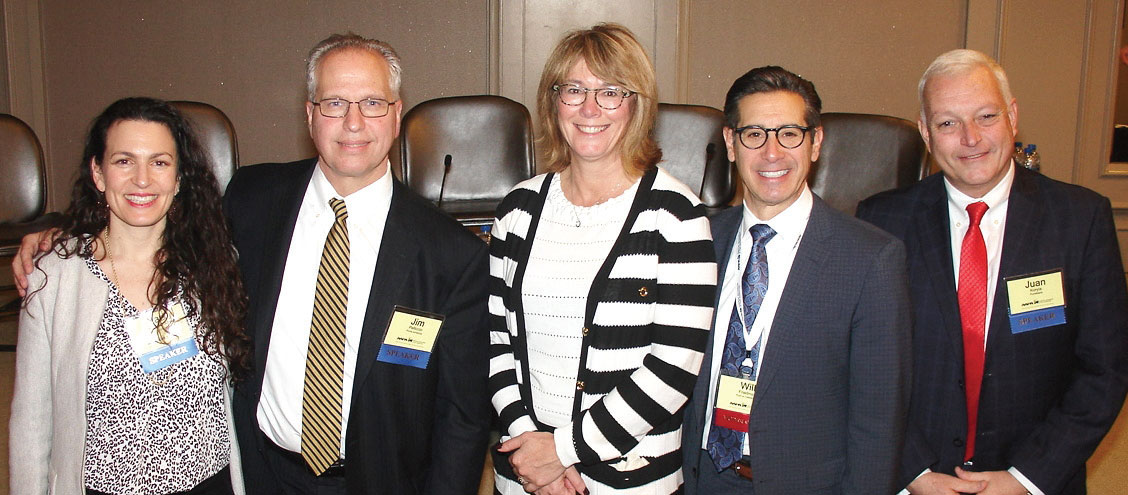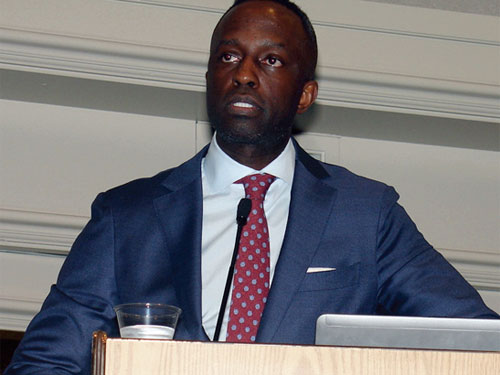Ports must champion infrastructure revitalization and unshackled global trade while collaborating on innovative approaches to keeping rising cargo volumes moving efficiently.
That was among key takeaways from the American Association of Port Authorities’ Planning for Shifting Trade Conference held Jan. 30-31 in Tampa, Florida.
The U.S. East Coast, particularly the Southeast, due to regional demographic trends, is expected to lead the way in port activity escalation, Hurwitz said, adding that the U.S. Gulf Coast also should outperform the national average as West Coast ports continue to lose market share.
U.S. ports should step up their support of reinvigorating infrastructure, according to Hurwitz.

“Port are, and should be, champions of infrastructure development,” Hurwitz said.
A panel discussion on market outlook from port, terminal operator and ocean carrier perspectives brought calls for use of innovative technologies to help move goods swiftly and proficiently through the U.S. transportation system.
“We’re working really hard on our predictive analytics,” said Karen Oldfield, president and chief executive officer of the Halifax Port Authority, adding that collaboration on technology is a priority at her Nova Scotia port.
Juan Kuryla, port director and chief executive officer of PortMiami, said such analytics are being looked at for deployment at his South Florida port, including in getting a handle on trucks as they approach the port so as to improve turn times at container terminals.

Jim J. Pelliccio, executive vice president of operations at leading U.S. terminal operator and stevedoring firm Ports America, said enhanced relationships between beneficial cargo owners, truckers and terminals are being pursued.
“We have to think outside the box,” Pelliccio said, “We are at that point where something must happen, and it will happen.”
Yael Bernholz D’Angeli, global head of strategic accounts for independent ocean carrier firm ZIM American Integrated Shipping Services Co. LLC, said that, in an era when many port terminals are “congested like hell,” she would encourage beneficial cargo owners to supply their own chassis.
Technologies such as blockchain bode to improve the communication of crucial information, she said, adding that she anticipates a positive year for ZIM in 2019, “but not a good year for trucking.”
The American Trucking Associations’ executive vice president of advocacy, Bill Sullivan, speaking on another panel, said he believes fixing sorry American transportation infrastructure can go a long way to easing trucking woes.
“We are turning 20th century infrastructure into 18th century infrastructure,” Sullivan said in condemning neglect of deteriorating highways and bridges. He said ATA is supporting a 20-cents-per-gallon increase in federal fuels taxes to support a nationwide infrastructure renewal program.
Brian T. Pallasch, managing director of government relations and infrastructure initiatives at the American Society of Civil Engineers, said lagging infrastructure is in the midst costing the United States $3.9 trillion in unrealized GDP growth from 2016 through 2025.
“We’ve really taken a generation off of investing in our infrastructure,” Pallasch said. “By underinvesting in infrastructure, we are hurting our economy.”
A third speaker on the panel, Jim Tymon, executive director of the American Association of State Highway and Transportation Officials, said he believes it will take “a menu of options” beyond simply a fuels tax hike to sufficiently fund needed repairs as well as vital new surface transportation projects.
Meanwhile, speakers in a session on trade policy challenges concurred in decrying Trump administration implementations of large tariffs on imported goods.
“We’ve never seen a trade war won with tariffs,” said Edward L. Mortimer, executive director for transportation infrastructure at the U.S. Chamber of Commerce, calling for removal of retaliatory tariffs and advancement of trade pacts, including the U.S.-Mexico-Canada Agreement that awaits congressional approval.
“Getting it [the USMCA] ratified in 2019 is going to be critical,” Mortimer said, adding that he sees ratification as “a real challenge.”
Sharing anti-tariff sentiments was Scott Sigman, transport and export infrastructure lead at the Illinois Soybean Association, who said the share of U.S. soy sales going to Asia plummeted to 36 percent in 2018 from 85 percent in 2017.
“Trade tariffs have hurt producers from the start,” Sigman said.
Stephen Lamar, executive vice president of the American Apparel & Footwear Association, said “chaos” is the best word to describe U.S. trade policy over the past two years. He termed tariff-related actions “one massive inflationary play.”
Lamar said tariffs on imported apparel and footwear are “so bloody high” – in the range of 10.5 percent to 15 percent and more compared with an average of 1.4 percent for all commodities – that his association is urging its members to move sourcing from China, which has been the largest single supplier of such goods to American consumers.
In another session, a CSX marketing executive said the Jacksonville, FL-based firm has done a meritorious job of putting its precision scheduled railroading approach into practice.
Arthur L. Adams Jr., head of marketing services at CSX, said he believes the methodology has been improperly characterized as “slash and burn” by some observers.
“Scheduled railroading has gotten a bad rap,” Adams said, citing record low dwell times and best-ever velocities as examples of improvements to efficiency and network fluidity

Actions taken at CSX, he said, have included cutting the number of high-powered classification facilities, known as hump yards, to five from 12; consolidation of nine dispatch offices into one; removal from the CSX system of more than 1,100 locomotives and 28,000 railcars; and reduction of the company’s workforce by more than 4,000.
“We’ve been successful,” Adams said, noting that he has worked for CSX for a dozen years. “I didn’t think it was possible. Are we all the way there yet? Absolutely not. But our service scores have improved sequentially over the last four quarters.”




